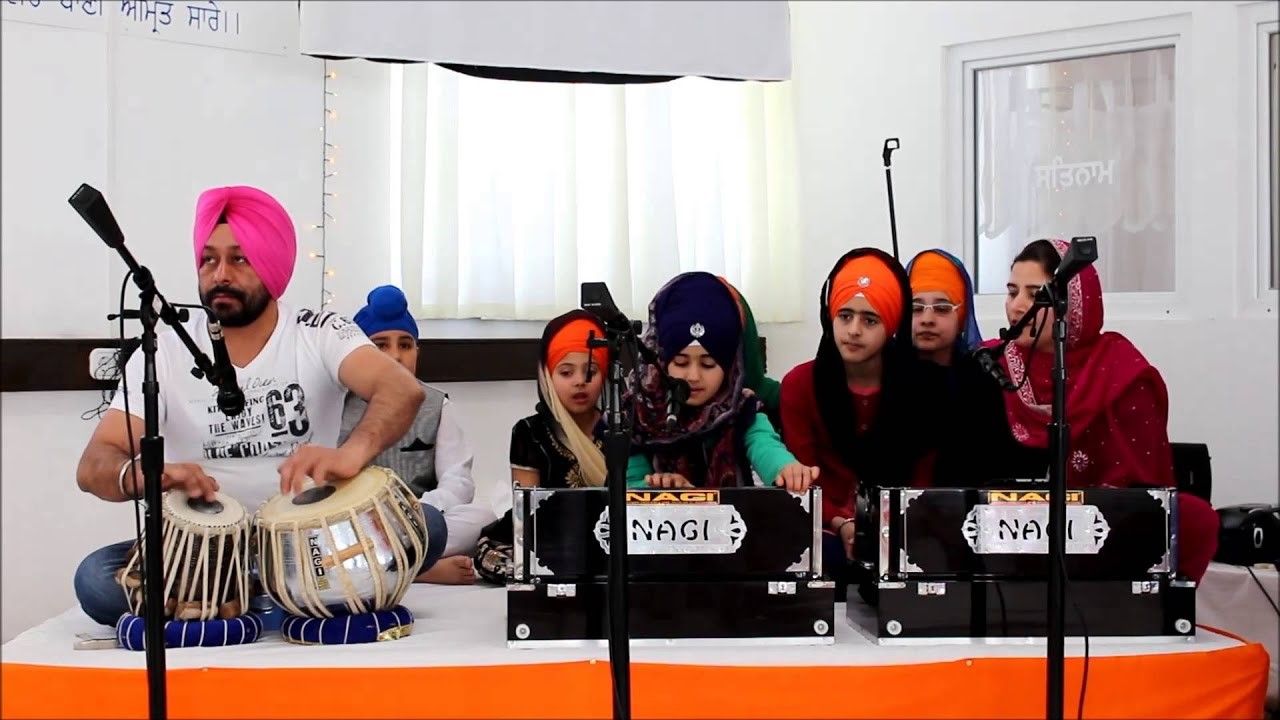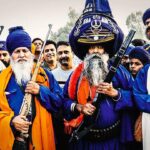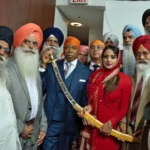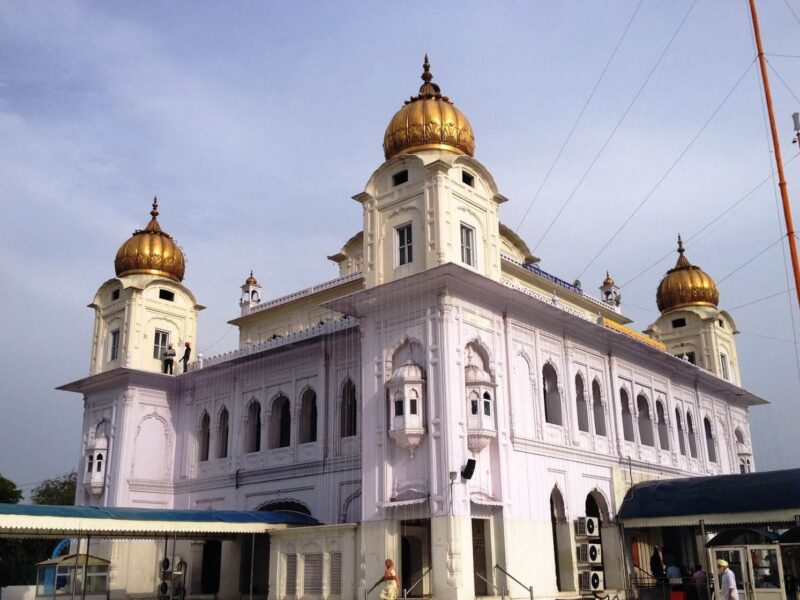Gurmat Sangeet or Shabad Kirtan has been an important aspect of Sikh devotion. Hymn-singing was, in reality, the Sikhs’ first form of worship. Even during Guru Nanak’s era, the followers gathered to hear and chant shabads, or hymns authored by the Guru, to give honour to the Lord. Kirtan-style chanting of melodies or Shabads form of the Guru Granth Sahib is known as Sikh’music’ or ‘Shabad kirtan.’
Musical instruments are usually referred to as saaj in Punjabi. Ivory, metal, gold, and peacock feathers adorn many of the instruments. Musical instruments are created by trained artisans who have a thorough understanding of musical tones. Gurbani Kirtan is a devotional recital of Gurbani in the Sikh tradition, based on the Guru Granth Sahib’s heavenly songs. Rababis was the first title given to all those who performed Kirtan. Being related to Guru Nanak’s enlightening insights in Gurbani Kirtan is cause enough to practise classical pieces in Gurbani Kirtan.
Musical Instruments used in Shabad Kirtans:
Tabla
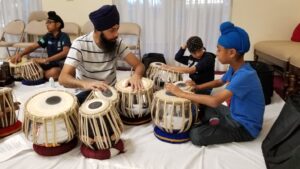
The tabla is a set of big and small drums with animal hide heads and leather lacing that are used to complement the harmonium, or conventional string instruments, in a wide range of rhythms. Regardless of the variances, every drum has one thing in common: a giant black circle in the very centre constructed of a mixture of gum and soot. In a Sikh temple, the tabla is frequently utilised during the musical hymns known as kirtan.
Harmonium
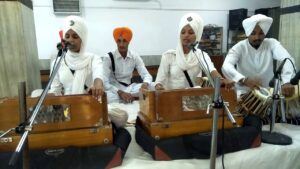
Since the 1800s, the Harmonium, also called Baja or Vaja, has been a popular hand-operated pump organ for kirtan. Deluxe features on several harmonium models include Upright, Coupler, Scale Changer, and Collapsible Case. The melody of the harmonium is created as air is blasted out via the individual reeds, comparable to that of an accordion. The musician will use one hand to pump the valves of the harmonium as well as the other hand to play the keys on the keyboard in the Indian harmonium way. The harmonium is nearly always backed by the tabla in the Sikh tradition when performing kirtan.
Sarangi
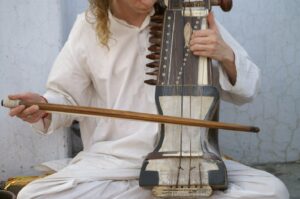
An instrument that belongs to the svaravad genre is the sarangi. The name of the instrument can allude to one of two things: “sau rang,” which means “100 colours,” or “a ring,” which means “colours everything it touches.” In any case, the words are appropriate because Har Gobind Singh Ji, the sixth Sikh guru, encouraged the use of instruments, particularly for dhadees, or heroic lyric singers.
Although the decade’s involvement should not be underrated, as their tales of heroism are regaled via great as their stories of bravery are serenaded through amazing, and tough to play, instrumental aids.
Rabab
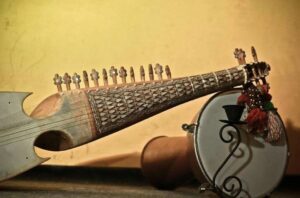
The rabab is a lute-like instrument that is mostly used in Northern India. The rabab is frequently used in traditional music performances, as well as in collaboration with the tabla. The rabab, like the violin, could be played in two forms: plucking the strings or bending the strings.
The rabab has a solid body, a larger neck, and a metal fingerboard, followed by four melody strings and several vibrating strings.
Taus
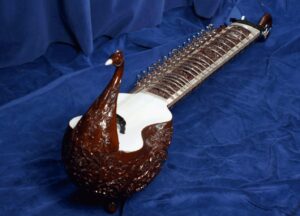
The taus, which is Persian for peacock, is a hybrid of two Sikh instruments: the sarangi and the sitar, and seems to have been invented by the fifth Sikh Guru’s great-grandson. The taus are frequently decorated in the same flamboyant and brilliant colours as the peacock in addition to meeting its namesake. There are nineteen metallic frets on the fretboard, that are imprecisely formed and linked with a cotton or silk ribbon.
A person should always be seated to perform the taus, which is made out of a round wooden stick, horsehair, a wooden bridge, and a screw.
Dilruba
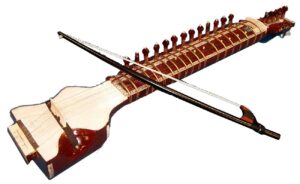
Dilruba is tuned similarly to the sitar. Aside from the 18 strings, the dilruba has metallic frets that may be changed to create different sounds. Though the dilruba could be discovered in places like Bengal, the instrument’s roots in the Sikh culture have been traced to Gobind Singh Ji, the tenth Sikh Guru. According to legend, the Guru sought to create a lighter piece than that of the Taus, which was a considerably larger instrument at the period and thus too cumbersome for the Sikh Khalsa army to transport.
One approach to living a spiritual existence is through Gurmat Sangeet. By taking up the Gurus’ instruments, you are committing to a lifetime of Sehaj, in which you will devote your entire existence to acquiring and surrendering to the Guru’s hukam.
You will develop regard for your Guru and the Sadh Sangat as you discover how to maintain your instrument. You would acquire to comprehend your neighbours’ musicology and how to respond to their feelings by hearing the holy sounds of the sanctified instruments and echoing them.
